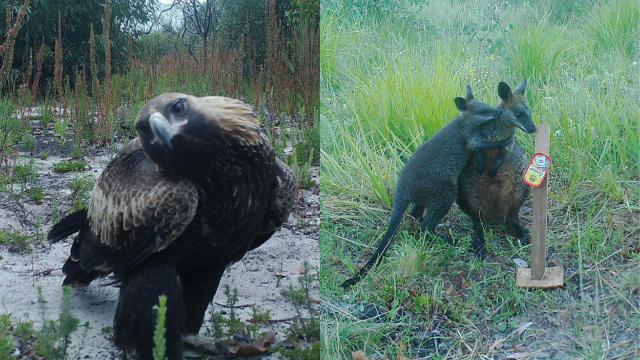Every now and then something cute AND tech-related comes across our desks. Today is that day. Google, WWF, and Conservation International have unveiled a series of images of Australian wildlife, which were captured by camera sensors in the wild with the help of Google AI image detection.
It’s all part of the group’s Eyes on Recovery project, which was launched back in 2020, in the wake of the devastating Black Summer bushfires. The Eyes on Recovery project is one of the largest sensor camera projects ever undertaken, seeing more than 1,100 cameras installed in eight fire-affected regions across four states – Queensland, New South Wales, Victoria, and South Australia.
Google has deployed its Wildlife Insights platform to these cameras to help identify the animals in the area and aid with conservation activities. Wildlife Insights is a platform powered by AI models that draws on machine learning to automatically identify species and track wildlife recovery over time.
“Detecting and identifying wildlife using AI helps researchers and conservationists monitor populations and patterns of endangered and invasive species more efficiently and accurately – and relieves them of the laborious and time-consuming process of manually reviewing images, one by one,” Google said in a blog post penned by Dr Emma Spencer, WWF’s Eyes on Recovery program coordinator.
Collectively, more than 7 million images have now been processed via the Wildlife Insights platform, and more than 150 species have been recorded across the project.
This includes more common species like eastern grey kangaroos and wombats, but also rarer animals like koalas and spotted-tailed quolls, which Google said can all now be detected with more than 90 per cent accuracy on average.
“Remarkably, the model has also been able to recognise images of the endangered Kangaroo Island dunnart. This is particularly surprising, as this marsupial mouse-like animal can be very hard to distinguish from other small mammals such as rodents, even by trained researchers,” Spencer explains.
“When we launched this project, we did not expect to detect so many threatened species. Some of these populations were small before the fires, and many habitats were severely burned. So, we have been overjoyed to see images of surviving koalas wandering through devastated Blue Mountains and South East Queensland.
“We’ve also spotted previously unrecorded colonies of brush-tailed rock wallabies deep within fire-ravaged habitat across Northern NSW. And, very excitingly, we’ve tracked strong recovery for the endangered Kangaroo Island dunnart, even though almost all of its habitat was impacted by the fires.”
With the help of Google AI Platform, Wildlife Insights is allowing the Eyes on Recovery team to process images five to ten times faster than traditional surveys. That means that what usually might take 500 hours to sort, is now being completed in 50 to 100 hours.
Google said the technology has also removed the need for researchers to filter out meaningless data, which has been a significant burden on traditional research processes – as 90 per cent of images taken during camera surveys can be false triggers due to moving grass and vegetation.
Let’s take a look through some of the adorable snaps.










It’s a great initiative and we hope to see more from it in the future.
